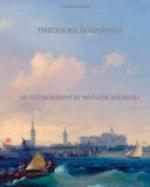Little green heron, night heron, red-tailed hawk, yellow-billed cuckoo, kingfisher, flicker, humming-bird, swift, meadow-lark, red-winged blackbird, sharp-tailed finch, song sparrow, chipping sparrow, bush sparrow, purple finch, Baltimore oriole, cowbunting, robin, wood thrush, thrasher, catbird, scarlet tanager, red-eyed vireo, yellow warbler, black-throated green warbler, kingbird, wood peewee, crow, blue jay, cedar-bird, Maryland yellowthroat, chickadee, black and white creeper, barn swallow, white-breasted swallow, ovenbird, thistlefinch, vesperfinch, indigo bunting, towhee, grasshopper-sparrow, and screech owl.
The birds were still in full song, for on Long Island there is little abatement in the chorus until about the second week of July, when the blossoming of the chestnut trees patches the woodland with frothy greenish-yellow.[*]
[*] Alas! the blight
has now destroyed the chestnut trees,
and robbed our woods
of one of their distinctive beauties.
Our most beautiful singers are the wood thrushes; they sing not only in the early morning but throughout the long hot June afternoons. Sometimes they sing in the trees immediately around the house, and if the air is still we can always hear them from among the tall trees at the foot of the hill. The thrashers sing in the hedgerows beyond the garden, the catbirds everywhere. The catbirds have such an attractive song that it is extremely irritating to know that at any moment they may interrupt it to mew and squeal. The bold, cheery music of the robins always seems typical of the bold, cheery birds themselves. The Baltimore orioles nest in the young elms around the house, and the orchard orioles in the apple trees near the garden and outbuildings. Among the earliest sounds of spring is the cheerful, simple, homely song of the song-sparrow; and in March we also hear the piercing cadence of the meadow-lark—to us one of the most attractive of all bird calls. Of late years now and then we hear the rollicking, bubbling melody of the bobolink in the pastures back of the barn; and when the full chorus of these and of many other of the singers of spring is dying down, there are some true hot-weather songsters, such as the brightly hued indigo buntings and thistlefinches.




